
North of the Missouri River, miles of gravel roads wander through prairies, oak groves, and river valleys that most highway travelers never glimpse. Tucked inside those quiet reaches are villages so small that porch lights double as streetlamps and the night sky still feels endless.
We gathered ten of these out-of-the-way places where solitude comes naturally, neighbors wave from tractors, and downtown traffic might amount to a single pickup at the four-way stop.
Each town offers its own blend of history, landscape, and hometown quirks, yet all share a welcome distance from fast food signs and city noise. Whether a traveler hopes to fish a hidden creek or a homesteader wants elbow room for fruit trees, the northern tier of the state delivers.
Here are ten of the most secluded settlements we’ve found, counted down from the largest on the list to the tiniest.
25. Mill Grove – Prairie Quiet Beside the Thompson River
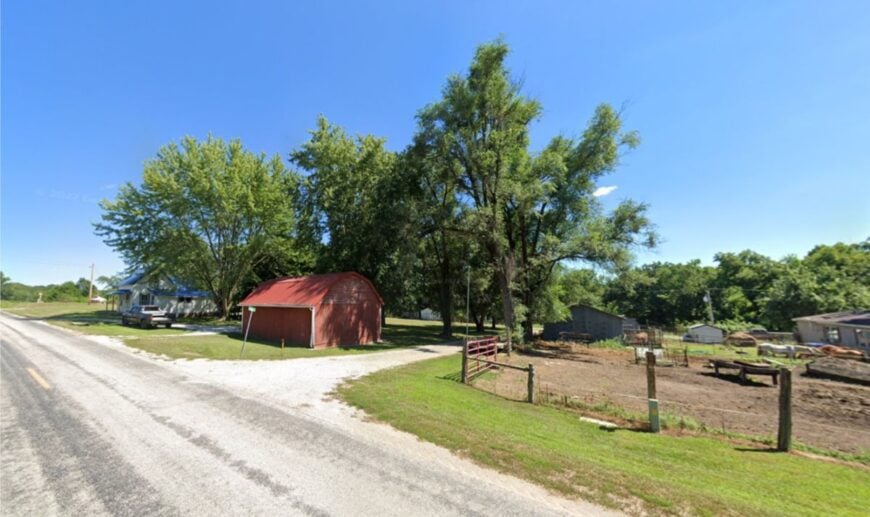
Mill Grove is the kind of place you could miss even if you were looking for it. Surrounded by lowland pastures and the winding bends of the Thompson River, the town is hidden by distance as much as by silence.
There are no chain stores or flashing signs—just gravel roads that meander like the creeks nearby and a cluster of homes that seem to breathe with the seasons. Life here is quiet and practical, anchored by hayfields, small-scale farming, and the occasional river angler setting out at dawn.
You might pass an old firehouse, pause at a grassy park bench, or strike up a conversation with someone who’s lived here all their life. The birds seem louder than the road, and the only crowds gather when the fireflies do. It’s the kind of place that holds onto you long after you leave—not with noise, but with peace.
Where is Mill Grove?
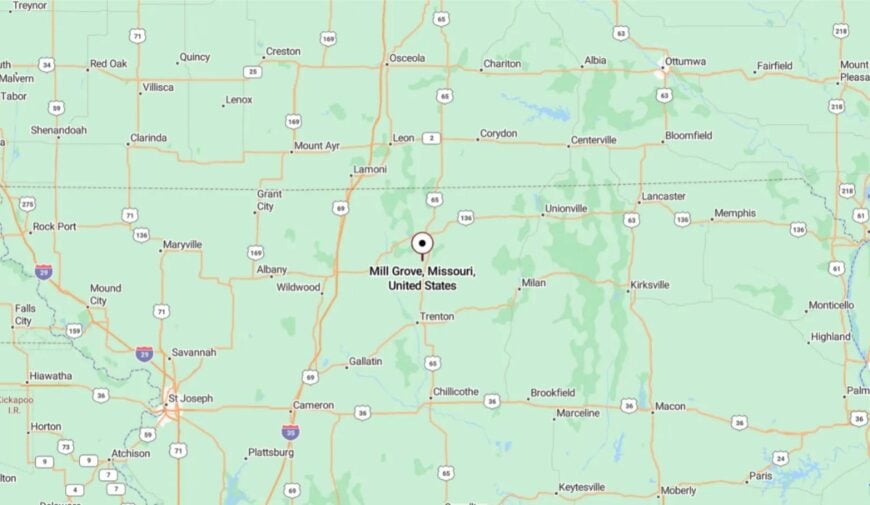
Mill Grove sits in north-central Missouri, nestled within the gentle folds of Mercer County. It’s a few miles southeast of Princeton and tucked near the Thompson River’s quieter curves.
You reach it by taking Missouri Route D and following gravel backroads that narrow into tree-lined ribbons. It’s close enough to be found, but far enough to feel forgotten—in the best kind of way.
24. Denver – Tucked Where Blacktop Ends
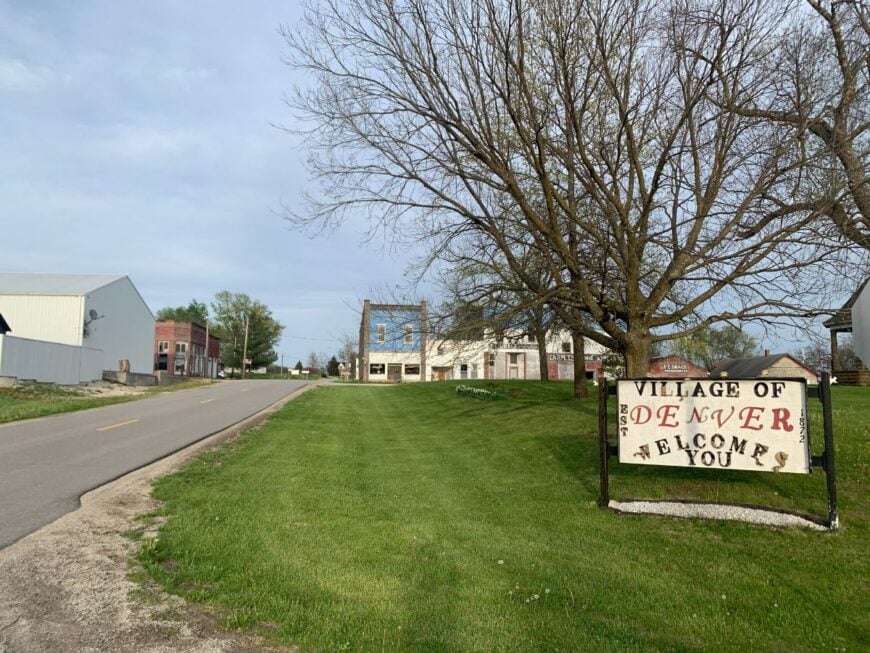
Denver is where the pavement ends and the prairie hush begins. With fewer than 40 people calling it home, this Harrison County speck is wrapped in soy fields, dirt roads, and a stillness that doesn’t break easily.
Time slows among its weathered barns and faded storefronts, where a grain silo might be the tallest thing you see for miles. There’s no real rush here—just chores, conversation, and the occasional gathering under the stars. Life revolves around the land, and the rhythms are rural: planting, harvest, storm, calm.
Some weekends, kids chase dogs past a shuttered school, and everyone knows which porch light stays on late. It’s the kind of town where the quiet feels intentional, not accidental.
Where is Denver?
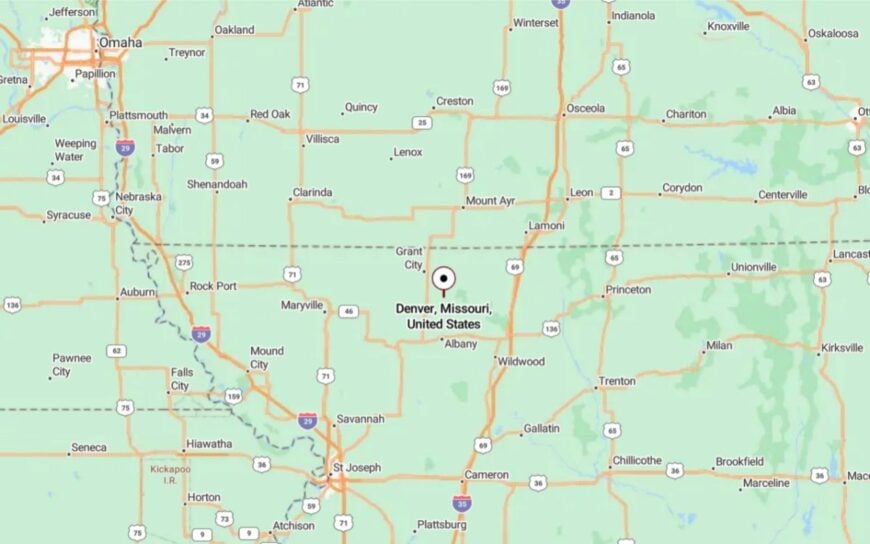
You’ll find Denver in the northern hills of Worth County, southeast of Grant City and far from the hum of U.S. 69. The journey winds along gravel county roads, flanked by open fields and fenceposts draped in vine.
It’s the sort of place you arrive at by memory more than by map. And once you’re there, the silence feels earned.
23. Lemons – The Town the Railroad Left Behind
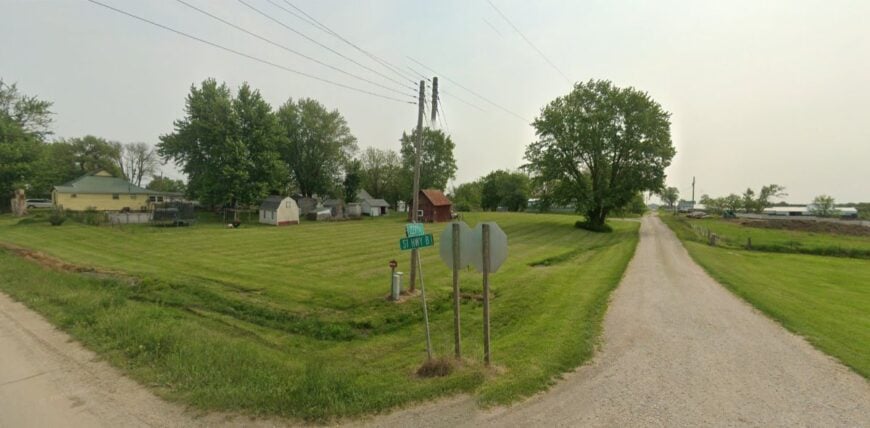
Lemons is what remains when the world forgets a town but the people don’t. Tucked into a fold of Sullivan County farmland, its silence is more sacred than eerie—a stillness broken only by birdsong or the sigh of wind through tall grass.
The old railroad spur, long rusted, slices through as if time paused but never left. Just a few dozen people call it home now, but they maintain gardens, swap baked goods, and sit in church pews that have outlived generations.
There are no shops, no gas stations—just footprints in the prairie and a bell that still rings on occasion. The nearest neighbor might be a mile down the road, but you’re never really alone. It’s the kind of place that whispers, not shouts—and only if you’re listening.
Where is Lemons?
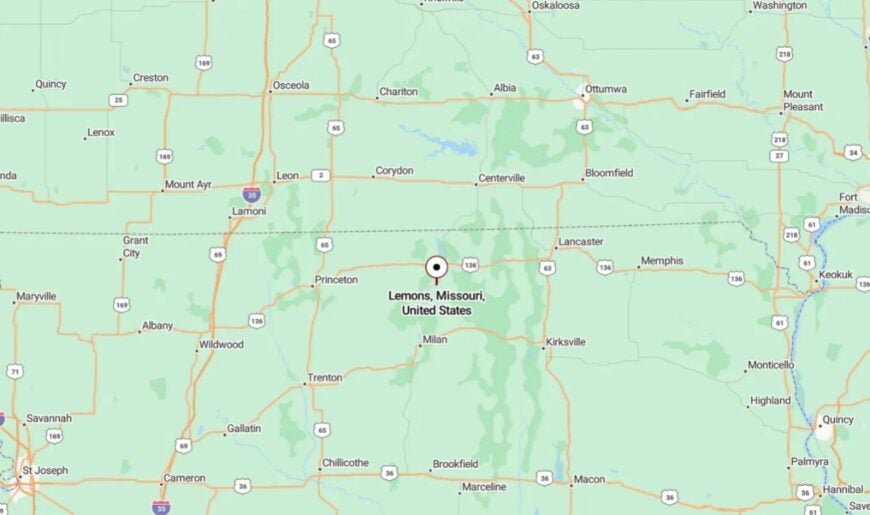
Lemons rests in eastern Sullivan County, hiding east of Milan on gravel-swept County Road JJ. It’s surrounded by undisturbed farmland and pin-drop quiet, far from any major traffic.
Getting there means zigzagging past creeks, fields, and the occasional crumbling silo. The journey feels like slipping between chapters of a forgotten book.
22. New Hampton – High Ground With an Old Soul

Perched on a prairie ridge, New Hampton watches the world from a distance—and prefers it that way. With just over 200 residents, it hums with a gentle rural pride, where the old VFW hall hosts card games and summer parades roll through on antique tractors.
The elevation offers long views and longer silences, broken only by the distant call of meadowlarks or the creak of a barn door in the wind. Shady streets are lined with deep porches and deeper histories, where every house seems to have a story etched into its woodgrain.
A few small shops, farming jobs, and seasonal festivals keep things moving—just not too fast. The feeling isn’t one of being cut off, but rather of being wrapped up. It’s the kind of place that makes you breathe a little slower.
Where is New Hampton?
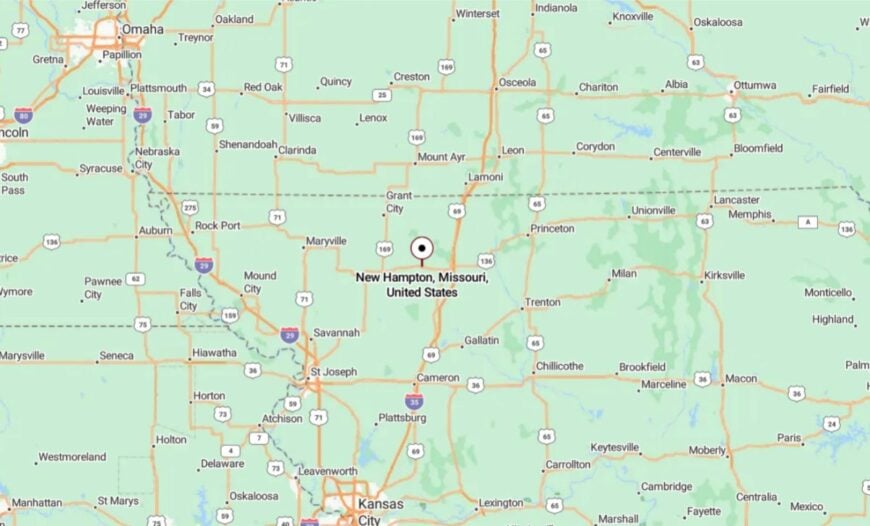
New Hampton rises from southern Harrison County, just south of Bethany along quiet Route 146. Though I-35 hums in the distance, the town’s hilltop setting buffers it from everything modern.
Visitors typically approach through a patchwork of county roads and rolling pasture. It feels like you’re climbing toward something—and leaving the rush behind.
21. Gentry – The Town Behind the Hill
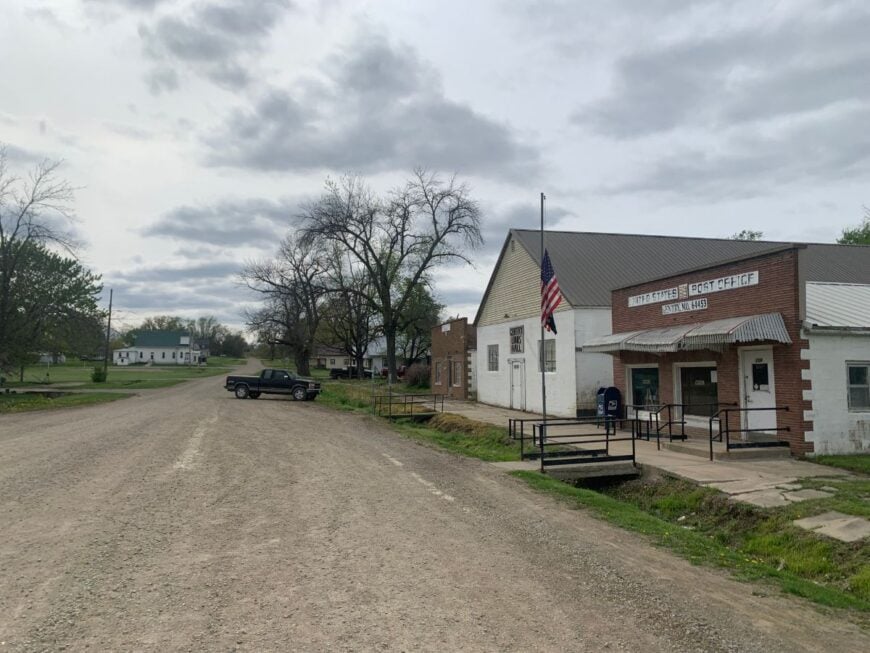
Gentry is easy to overlook, and that’s just the way its residents like it. Tucked behind gentle hills in Gentry County, this town of around 70 quietly thrives on rhythm and routine.
Gravel lanes lead past wide yards, leaning sheds, and a grain elevator that serves as both landmark and lifeline. The air smells like cut hay, and evenings often end with folding chairs pulled out under the stars. Farming is still king here—corn, soybeans, and the occasional beef steer filling the day.
You won’t find restaurants or gas stations, but you might find a neighbor handing you a jar of homemade jam. It’s the kind of place that asks nothing of you but your attention.
Where is Gentry?
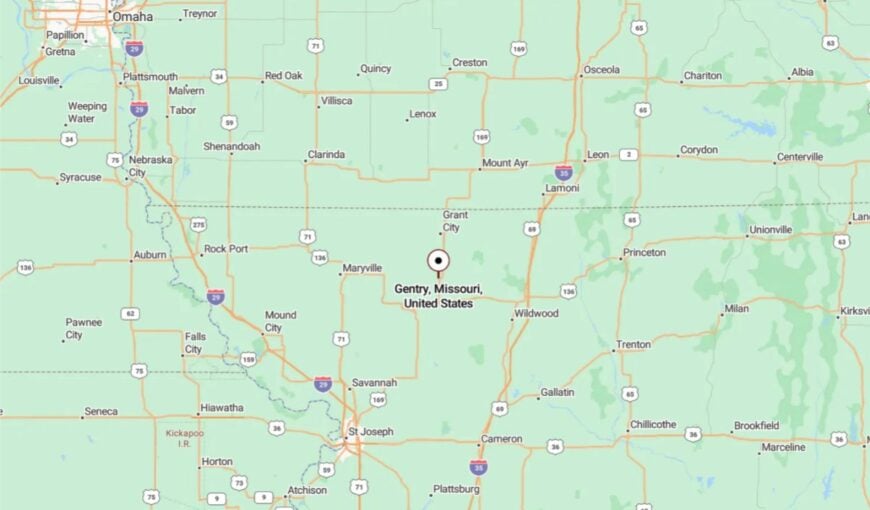
Gentry lies in the northeastern corner of Gentry County, just west of Albany via State Route H. It’s shielded from the main roads by low rises and the slow roll of farmland.
Reaching it requires dipping off the pavement and into quieter countryside. It’s not far on the map—but it feels far in spirit.
20. Pollock – Where the Mail Still Comes by Truck
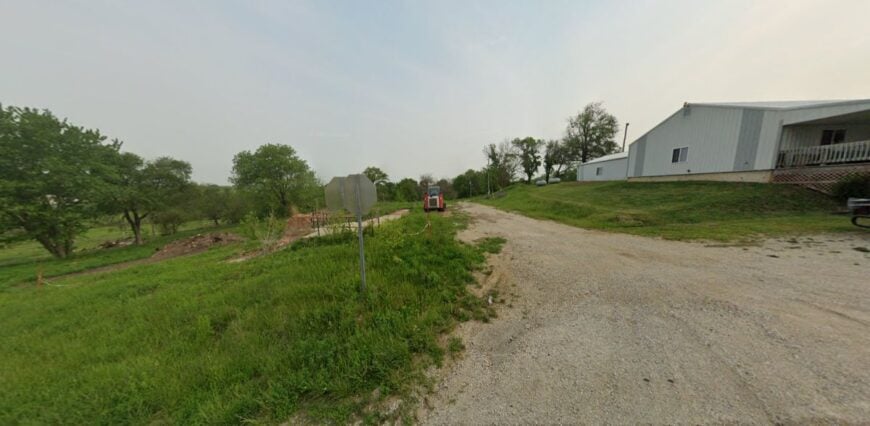
Pollock feels like it’s tucked in the folds of the earth, a little pocket of rural life where nothing happens fast and nothing happens by accident. Set beneath big skies in northwestern Sullivan County, it’s a place where gravel roads outnumber paved ones and mail still arrives by pickup.
With around 90 residents, the town orbits its American Legion post and country church—two anchors in an otherwise quiet grid. Life here is stitched together with farming, storytelling, and second-hand tools that still work fine.
Summer means fresh sweet corn and front porch visits; winter means woodstoves and barn cats curled up by feed sacks. There’s no nightlife, unless you count the stars and the occasional hoot of an owl. It’s the kind of place that reminds you how to listen again.
Where is Pollock?
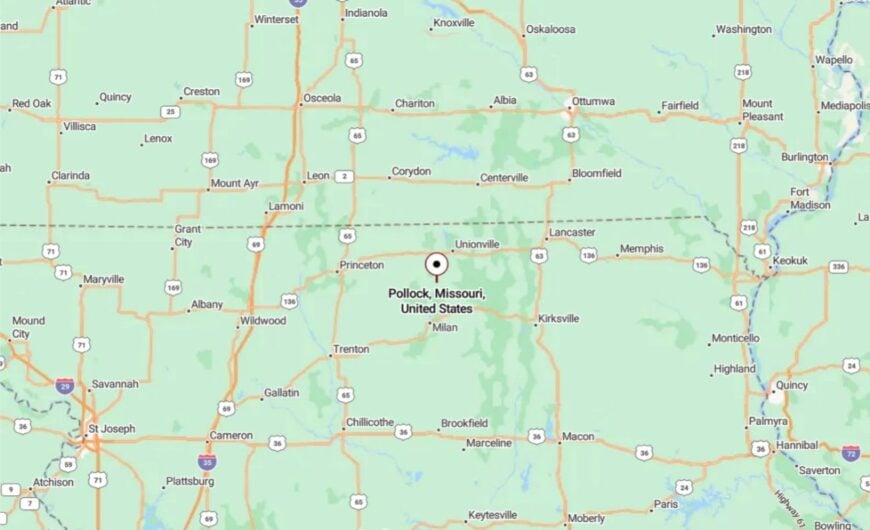
Pollock is perched in northwestern Sullivan County, not far from the Putnam County line. It’s reached by slipping off Route 5 and winding down quiet county gravel, past fenceposts and weathered barns.
The town is invisible from major roads and easy to miss if you’re not looking. But once found, it feels like a tucked-away page from a forgotten atlas.
19. Melbourne – Beyond the Cattle Fence
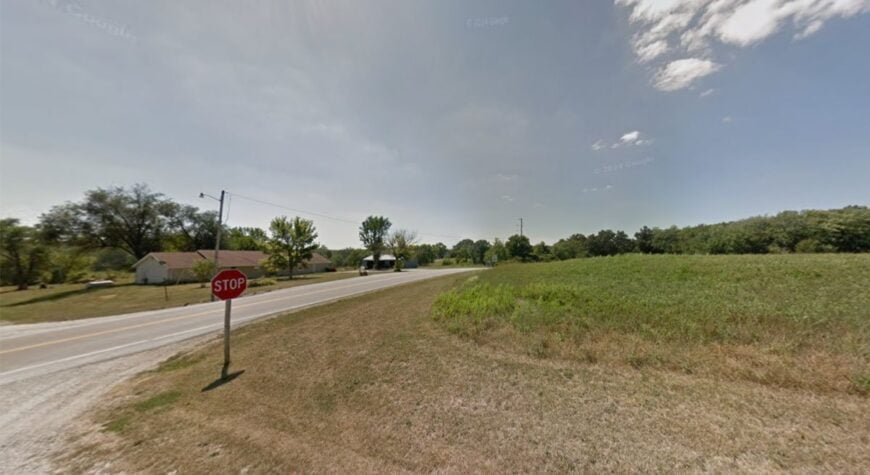
Melbourne is more memory than map dot—home to fewer than 30 people and bordered by fields that stretch toward the horizon in every direction. There are no storefronts, no traffic, and few signs of the outside world, save for the whistle of a distant hawk or the occasional rumble of a grain truck.
Life moves to the sound of wind through the bluestem and the gentle rhythm of daily farm chores. You’ll find wide lawns with apple trees, gardens full of pole beans, and one-room sheds filled with tools that still smell like sawdust.
This is a place where neighbors help stack hay, not scroll through newsfeeds. Come evening, the landscape glows gold, and the only rush is the one you feel in your chest. It’s the kind of place where the world finally quiets down.
Where is Melbourne?
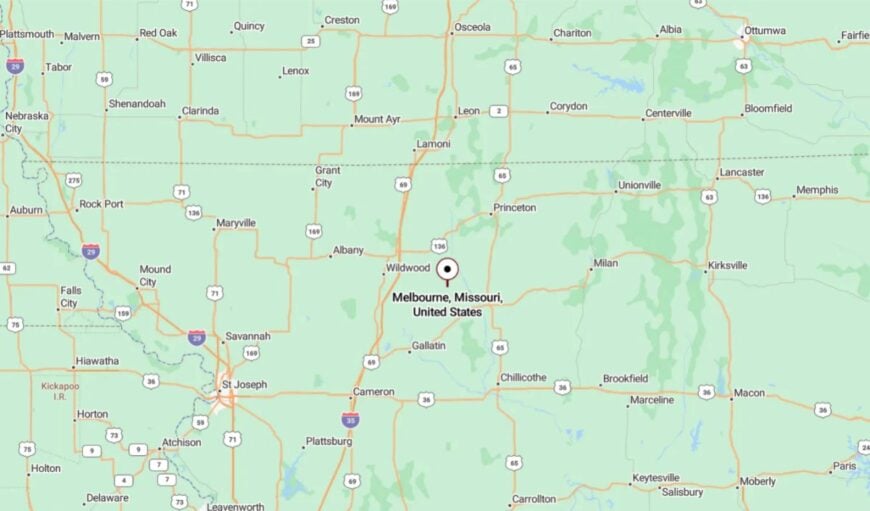
Melbourne lies in southeastern Harrison County, set between Brimson and Gilman City and accessible only by gravel roads like County Road BB. There’s no main highway in sight, and the approach cuts through pastureland and tree breaks.
The final stretch brings you into a gentle basin of farmland, bordered by birdsong and breeze. It’s a town so still, even the mail truck slows down.
18. Reger – Whisper of a Town in the Tallgrass
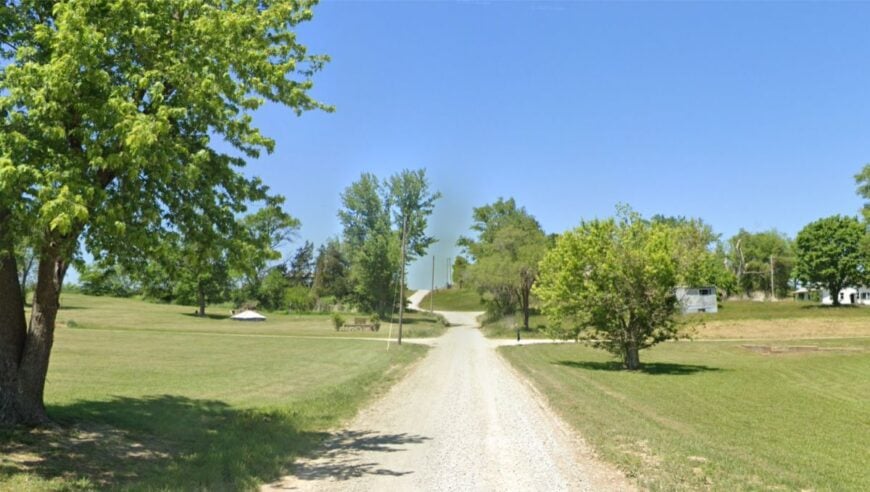
Reger is the sort of place where you hear the wind before anything else. With fewer than 30 folks spread across the hills of west-central Sullivan County, it lingers like a mirage on the prairie—familiar to a few, invisible to most.
The old church still holds hymnals from the 1950s, and some front porches haven’t seen fresh paint in decades, but they don’t need it. Life here is pared down to what matters: tending gardens, fixing fences, and greeting neighbors with slow nods and full eye contact.
There’s an annual pie auction at the community hall, and in spring, the whole valley smells of lilac and woodsmoke. Most folks raise cattle, chickens, or simply time. Reger doesn’t pretend to be more than it is—and that’s what makes it so unforgettable. It’s the kind of place that makes silence feel like company.
Where is Reger?
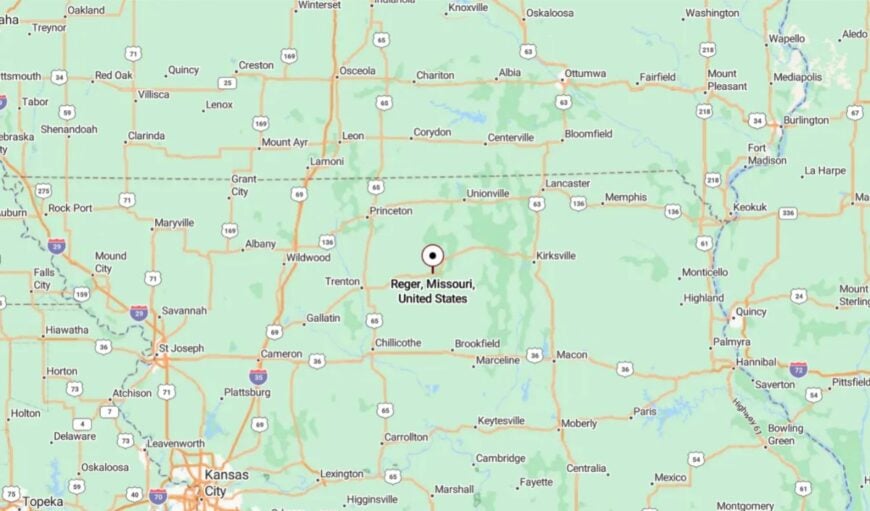
Reger sits in the open prairie of west-central Sullivan County, about eight miles southwest of Milan and just off Missouri Route 6. Visitors leave the highway for a winding gravel lane that climbs a shallow rise, flanked by round bales and scattered red barns.
The final approach is quiet, framed by sumac and switchgrass that seem to lean into the road. It’s not far on the map—but it feels like it’s a hundred years from anywhere.
17. Conception – Steeples and Silence
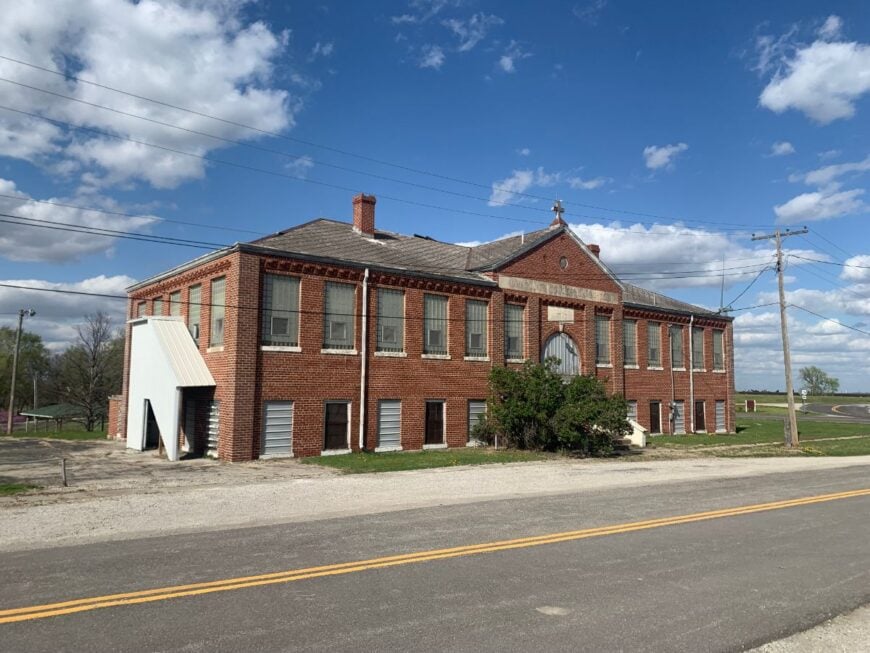
Conception doesn’t shout—it sings, softly, like the bells from the towering Benedictine abbey that anchors this village of 150. This part of Nodaway County is all long horizons and prairie stillness, where every breeze feels like it carries prayer.
Most of the town’s rhythm flows from the monastery: farming, scholarship, and quiet devotion. But beyond its walls are hayfields, wild clover, and a cluster of homes that seem stitched into the land.
There’s little traffic, little change—and that’s the point. Visitors come for the silence and leave hushed, as if carrying part of it home. It’s the kind of place that teaches you to breathe again.
Where is Conception?
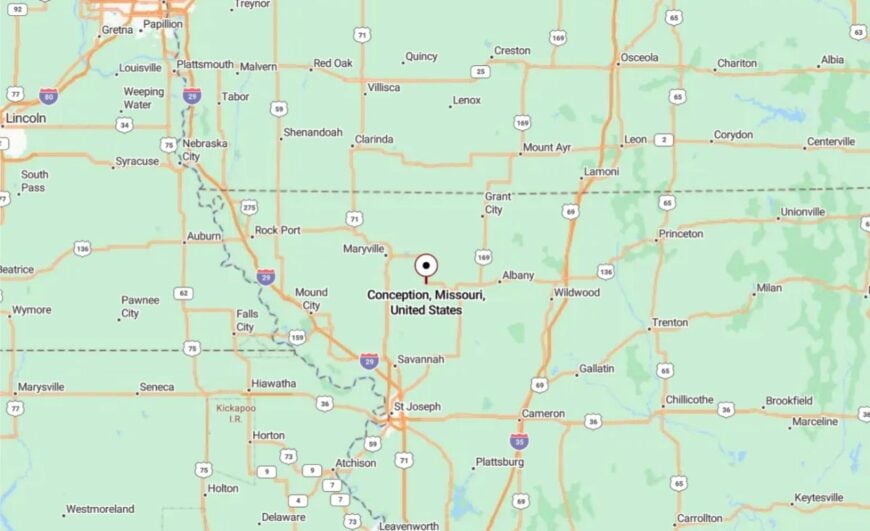
Conception rests in northeastern Nodaway County, twelve miles southeast of Maryville, just off Route VV. Though technically close to main roads, the monastery grounds and surrounding fields create a kind of sacred buffer from noise.
Access comes gently, through pasture and small hills, until the steeples rise into view like a rural skyline. It feels like arriving somewhere meant for reflection.
16. Osgood – A Patchwork of Fields and Front Porches
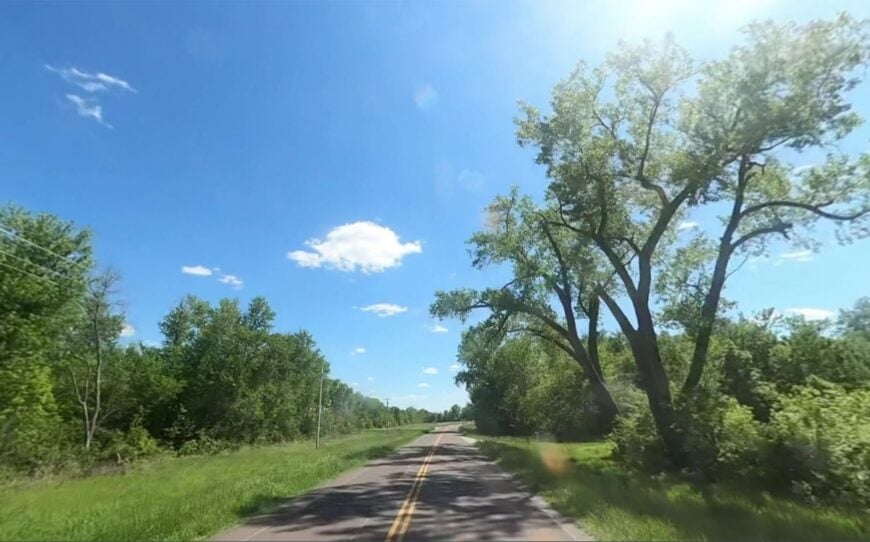
Osgood is where the state map thins out and the stars fill in the blanks. Home to fewer than 50 people, this southeastern Sullivan County village holds on with grit and grace, its two streets lined with weathered mailboxes and deep-rooted trees.
The local economy runs on gardens, gravel, and grit—neighbors hauling water, growing okra, and checking in by foot. There’s no downtown, no gas station, just one bench at the corner that doubles as a bus stop and a meeting place.
In spring, you’ll hear frogs singing from the ditches; in winter, the snow stays a little longer on the unplowed lanes. It’s not flashy or quaint—it’s raw and real. And that’s exactly what makes it unforgettable.
Where is Osgood?
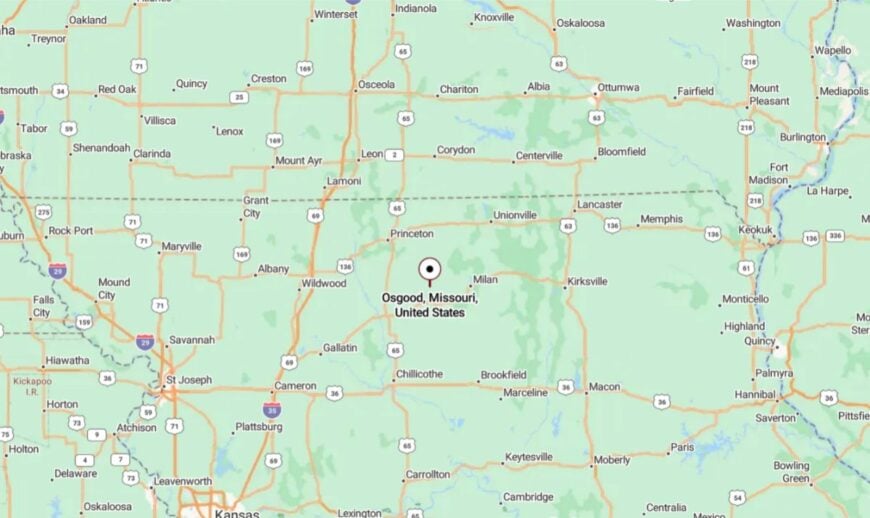
Osgood is nestled in the southeastern pocket of Sullivan County, roughly six miles east of Humphreys and a few miles south of Milan. The town is reached by Route T, then a quiet branch of gravel that fades into prairie.
With no commercial signs and barely any pavement, it’s easy to miss and impossible to replicate. It’s the kind of place where the horizon feels just a little bigger.
15. Hatfield – A Hamlet in the Hills
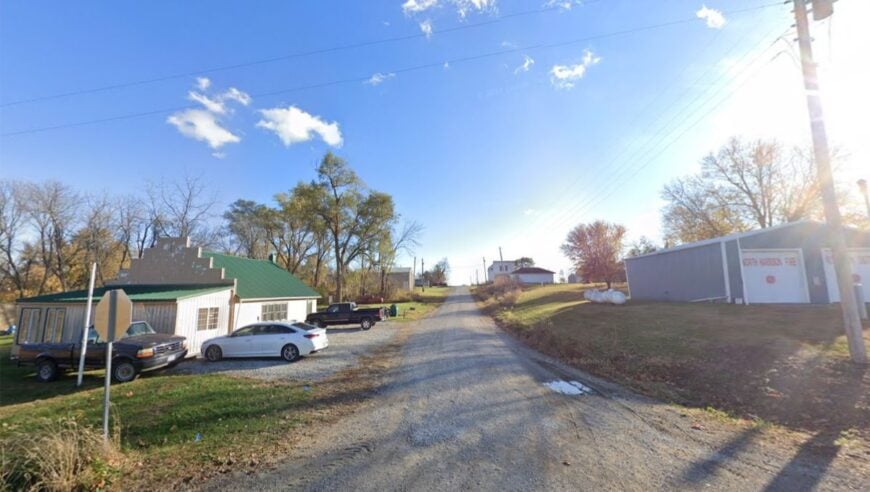
Hatfield is cradled between wooded ridges and old cattle fields, a place where gravel roads rise and fall like breathing lungs across the land. With just 45 residents, this northern Harrison County hamlet is quiet in a way that feels sacred—where the sounds of the outside world simply don’t make it in.
Locals still wave from tractors, and the post office sees more conversation than packages. At dusk, the hills cast long shadows over gardens, smoke curls from chimneys, and someone somewhere is shelling peas by hand.
Church suppers, deer tracks, and the low whistle of wind through barbed wire define the rhythm here. There’s no pretense—just presence. It’s the kind of place where time stretches, and silence feels earned.
Where is Hatfield?
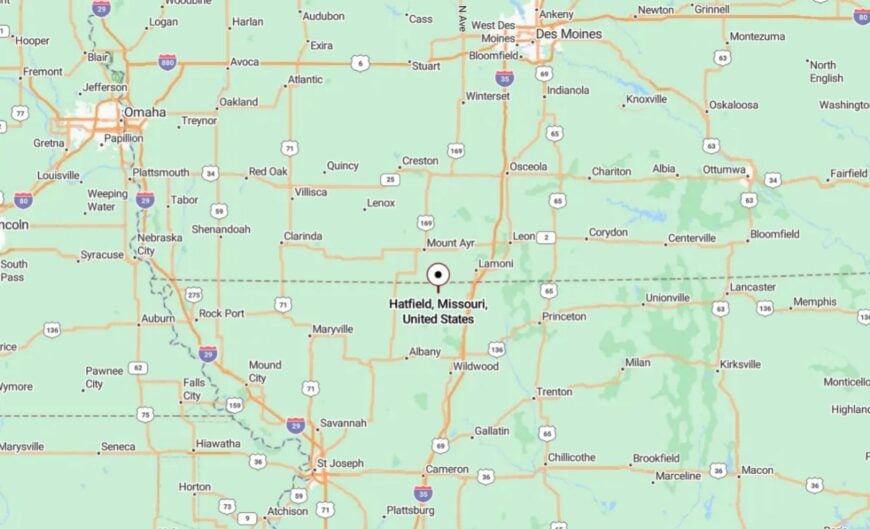
Hatfield is tucked in the far northwest corner of Harrison County, just a few miles from the Iowa state line. It’s reached via County Road T, winding past timber, pastures, and rusted farm gates.
The nearest highway is miles away, with only the Nodaway River as a natural companion. Out here, you don’t stumble into Hatfield—you arrive on purpose.
14. Green Castle – A Rustling Pause Between Fields
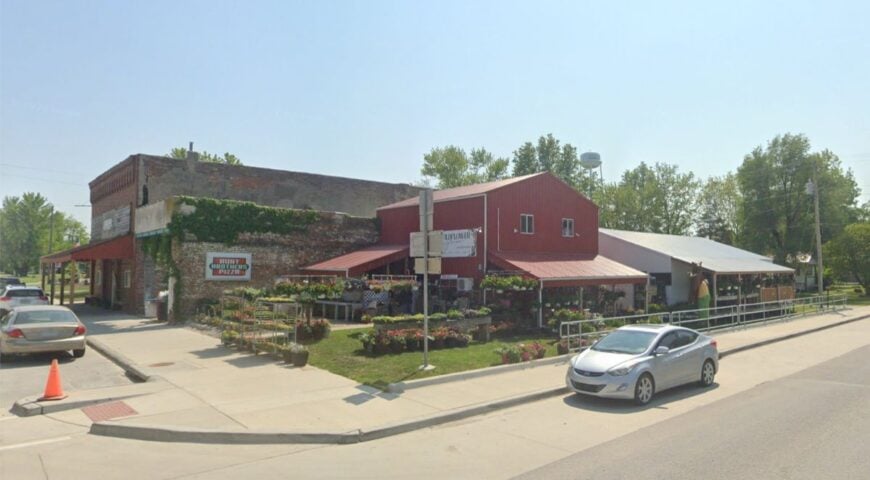
Green Castle is a slow heartbeat of a town, where life settles into soft loops of farming, front porch sitting, and swapping vegetables at the general store. With about 250 residents and more open sky than traffic, it lingers in a liminal space between past and present.
Time shows in the brick storefronts and rusted gas pumps that still stand like proud elders. People here still talk over fences, and kids race bikes down streets where cars rarely pass.
There’s a Fourth of July parade, a fall harvest potluck, and a creek that gurgles like an old friend. Soybeans and livestock anchor the economy, but peace is what keeps people rooted. It’s the kind of place where you realize how much noise you’ve been carrying.
Where is Green Castle?
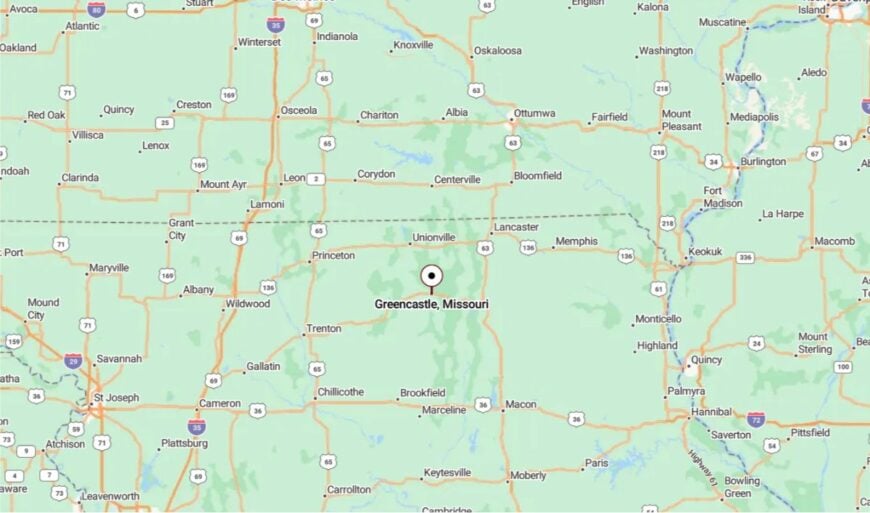
Green Castle lies in eastern Sullivan County, halfway between Milan and Kirksville along Missouri Route O. Despite the state highway, traffic is light and the horizon unbroken by billboards or fast food signs.
To get there, you drive through rolling fields dotted with grain elevators and silos. Once inside, the quiet presses close like a favorite quilt.
13. Brimson – The Forgotten Edge of the Map
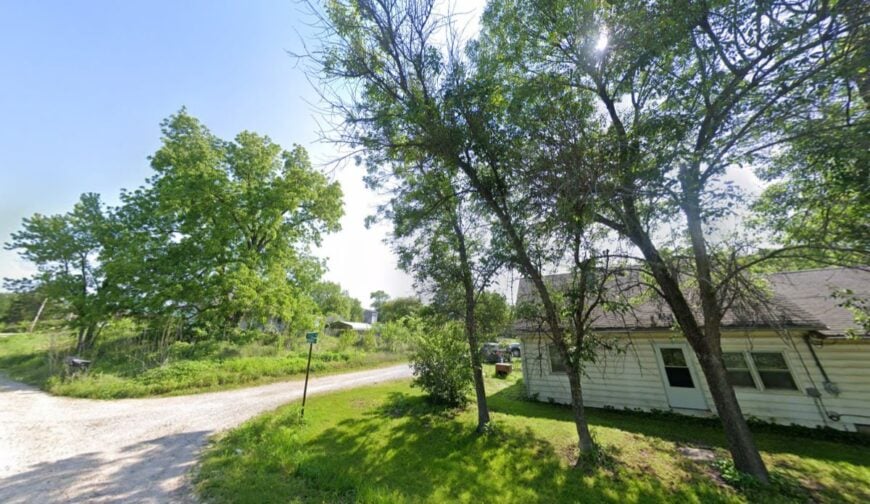
Brimson exists just on the edge of awareness—a hamlet tucked between creek beds and fence lines in southern Grundy County. Its sixty or so residents live in wide-set houses with wind chimes, woodpiles, and front yards that stretch into pasture.
There’s no commercial core, no neon signs—just the occasional grain bin and a weathered church steeple poking above the tree line. In the evenings, you’ll hear coyotes or the low buzz of a distant combine, but little else.
Folks here trade firewood, share stories at fish fries, and measure time by the seasons, not the clock. The freight trains don’t run anymore, and most roads don’t even have names. It’s the kind of place that doesn’t need to be big to feel whole.
Where is Brimson?
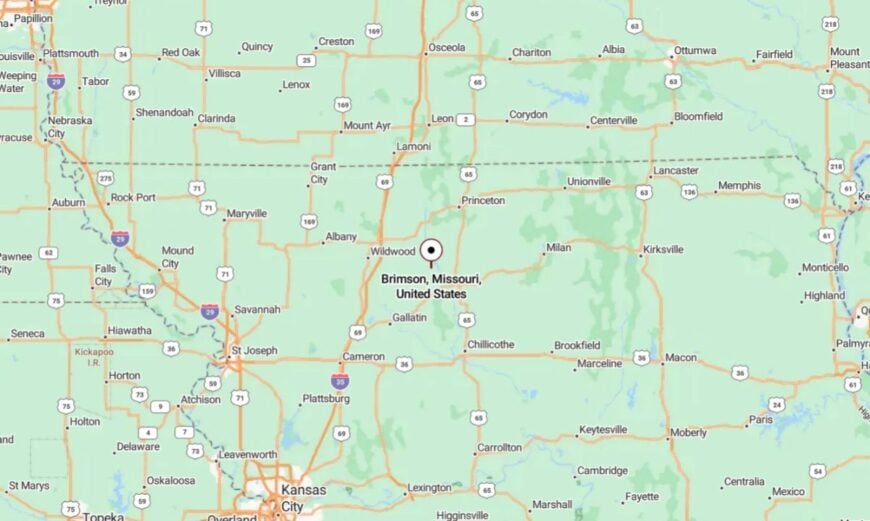
Brimson sits in the southwest corner of Grundy County, nestled near Muddy Creek and a few winding miles off Route 146. To reach it, visitors detour from Trenton and follow gravel stretches flanked by pasture and timber breaks.
The land rises gently, then folds into quiet lowlands where the town rests. It’s a place that slips under your radar and straight into your memory.
12. Powersville – Prairie Crossroads With Room to Breathe
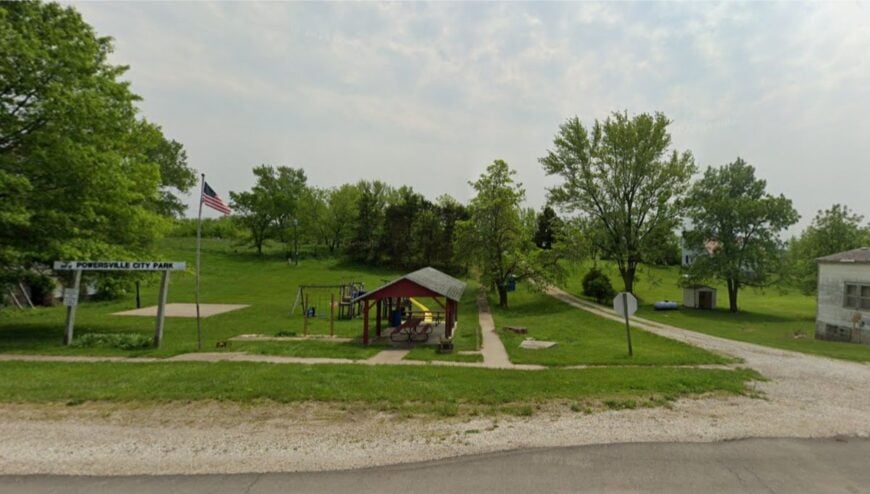
Powersville is a crossroads of tallgrass and time, where fewer than 50 people live among hayfields, hedgerows, and sky so open it feels like its own ocean. This northern Putnam County village once buzzed with more voices, but now hums with the rhythm of rural solitude.
A grain elevator, a few barns, and a small post office make up most of its footprint, while deer trails outnumber traffic lanes. Kids fish the creek, elders swap honey and eggs, and the pace slows enough to notice the way clouds gather over corn.
Farming still holds strong here, but it’s the stillness that truly sustains. It’s the kind of town that doesn’t ask for your attention—it just quietly deserves it.
Where is Powersville?
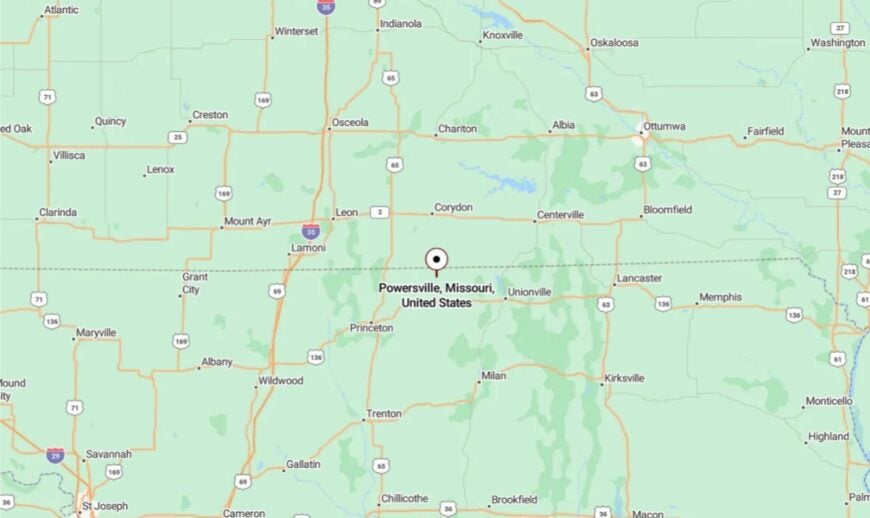
Powersville rests in northern Putnam County, a mile south of the Iowa state line and just off U.S. Route 136. You reach it by veering east onto backroads that pass through windrows and grazing land.
The final stretch is a gravel path that opens onto high prairie and the steady skyline of grain bins. It’s the last stop before open space takes over.
11. Cainsville – Ridges, Rails, and Rural Quiet
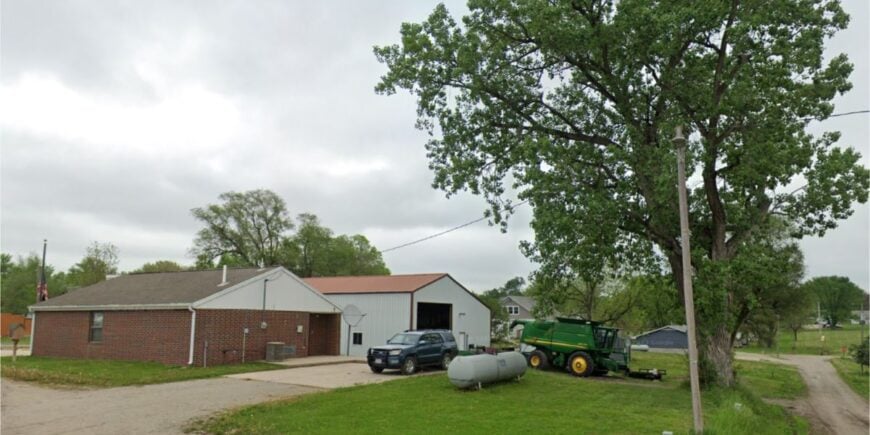
Cainsville hunkers into the hills of northeast Harrison County like it was built to disappear. With around 275 residents, it’s one of the largest towns on this list, but its setting among forested ridges and meandering creeks keeps it cloaked in calm.
The town once served rail traffic, but those whistles are long gone, replaced by birdsong, rustling leaves, and the low rumble of a tractor in the distance. A few shops still hang on, but most business is personal—handshakes, roadside stands, and friendly nods on morning walks.
The East Fork Grand River wraps nearby, adding fog to the early hours and a sense of mystery to the place. The hills cradle Cainsville like a secret. It’s the kind of town where you feel sheltered—in space and in spirit.
Where is Cainsville?
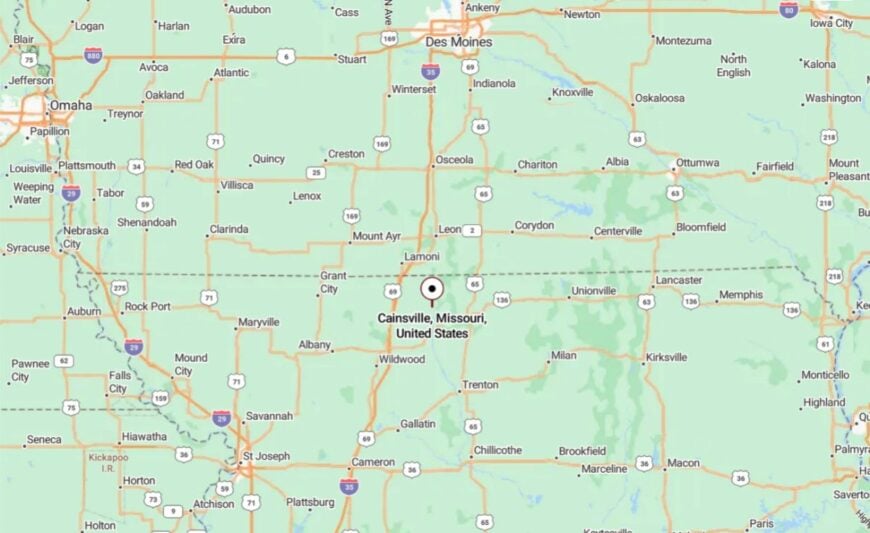
Cainsville is tucked into the northeast corner of Harrison County, near the Iowa line and east of Bethany. It’s reached via Route N, which drifts off from U.S. 69 and narrows as it climbs into the hills.
The approach weaves through timber, hayfields, and shadowed valleys until the town reveals itself. Out here, distance isn’t just measured in miles—it’s measured in quiet.
10. Linneus – Courthouse Square in a Sea of Green
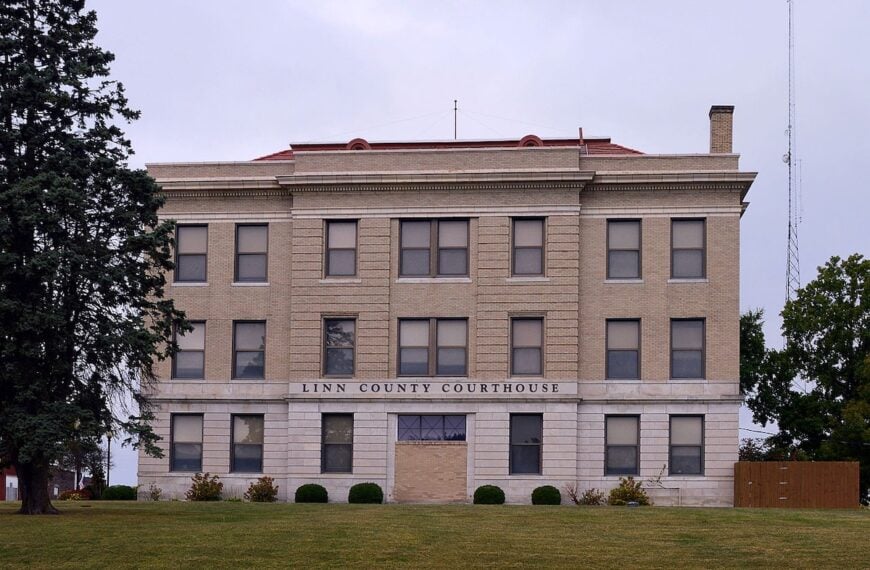
Home to roughly 300 residents, Linneus revolves around a handsome 1913 stone courthouse that anchors the central square. Travelers can stroll shaded sidewalks, browse the Linn County Museum’s trove of pioneer memorabilia, or cast a line in nearby Locust Creek.
Farming, cattle, and county government provide the bulk of local employment, while a growing number of telecommuters appreciate the reliable fiber internet quietly installed several years ago.
What preserves the hush is the town’s position ten miles off U.S. 36, ringed by rolling pasture and hardwood groves that swallow highway noise long before it reaches the square. Porch swings outnumber storefronts, and by dusk the dominant sound is wind slipping through walnut branches.
Where is Linneus?
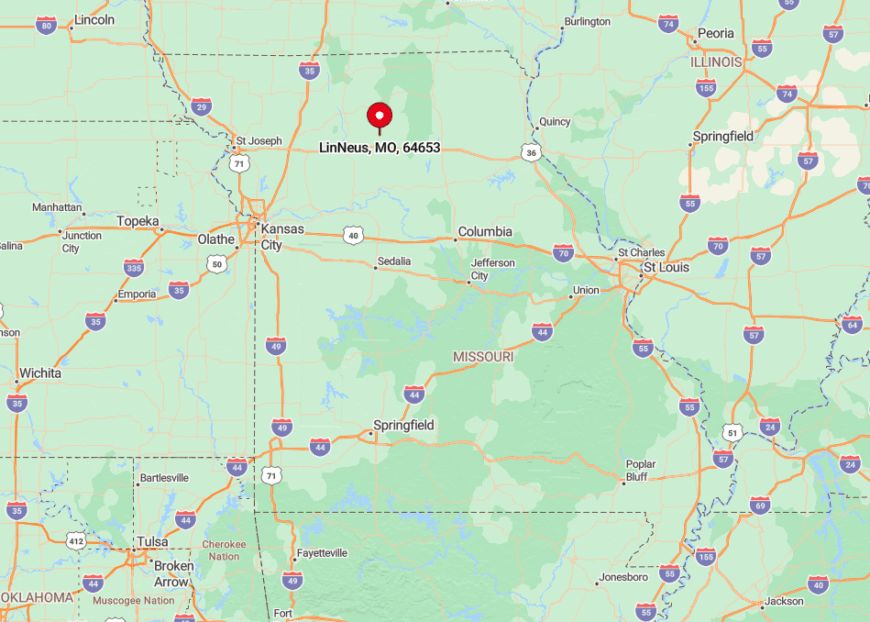
Linneus sits in central Linn County, about forty miles east of Chillicothe and twelve miles west of Brookfield. Thick belts of oak and hickory isolate the village from the four-lane corridor to the south, reinforcing the sense of remove.
Drivers reach town by meandering north on Missouri Route 5, then easing along Route B until the courthouse dome appears above the trees. Because those two-lane roads see more tractors than semis, arriving already feels like slowing time.
9. Elmer – Sleepy Settlement Along the Chariton River
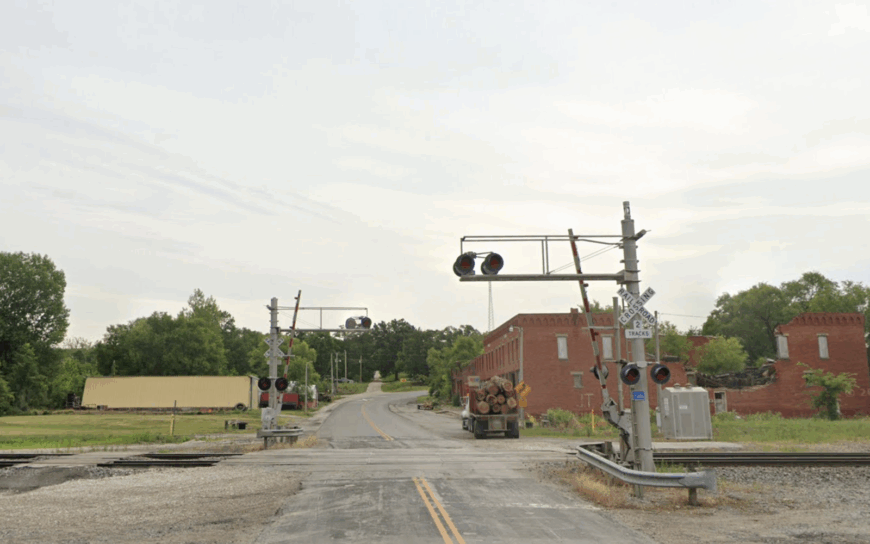
Elmer counts close to 90 inhabitants, spread along tidy lanes trimmed with Victorian storefronts restored by weekend carpenters. Canoe launches on the Chariton River lure anglers chasing flathead catfish, and autumn brings bow hunters to nearby Union Ridge Conservation Area.
Agriculture and a single custom saddle shop provide most paychecks, yet the absence of chain stores has encouraged a lively barter culture for vegetables, eggs, and firewood.
Elmer’s distance—eighteen miles from the nearest big-box sign—keeps traffic minimal, while ribbon-like river bluffs and bottomland timber dampen outside sounds. Nightlife usually means a bonfire behind the old depot, where frogs provide percussion.
Where is Elmer?
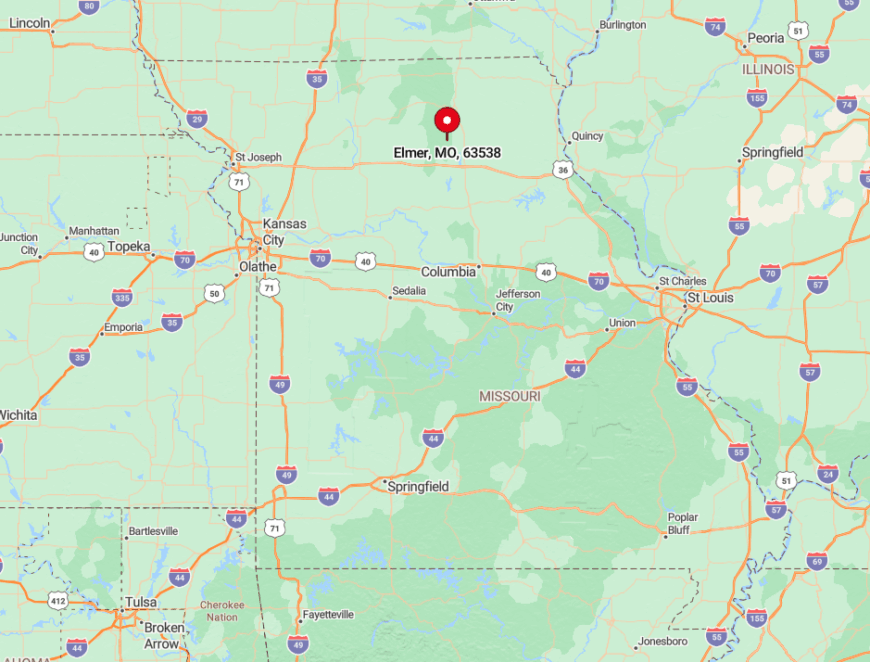
The village occupies the extreme northern tip of Macon County, tucked just east of Route K and two miles south of the Adair County line. Thick woods and the Chariton’s horseshoe bends hem in development, so the grid of streets never grew beyond eight blocks.
Reaching Elmer from U.S. 63 requires a fifteen-minute jog west on State Route H, a drive often shared with wild turkey strutting along the shoulder. The final approach crosses a one-lane iron bridge that feels like a threshold into quieter days.
8. Worth – Last Stop Before the Grand River Bluffs
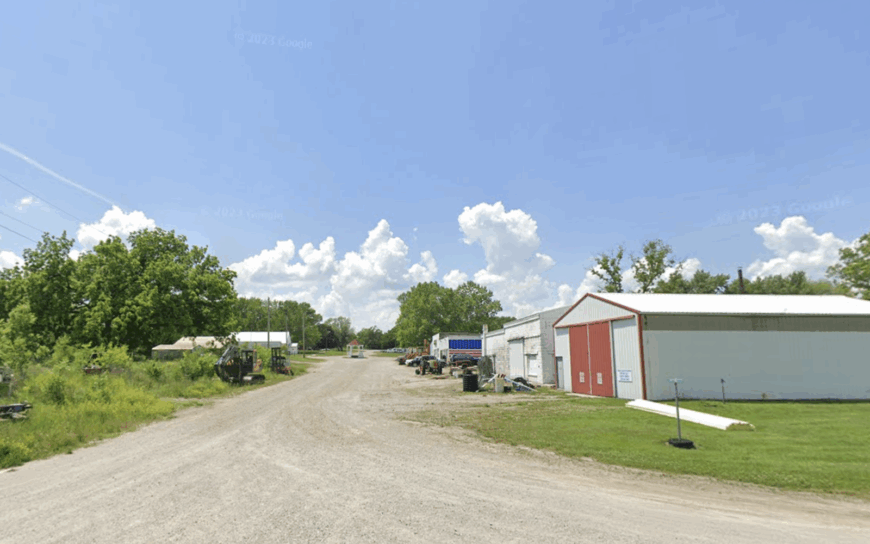
Fewer than 70 people call Worth home, their houses perched along a ridge that overlooks the forested Grand River valley. Residents spend weekends arrowhead hunting on gravel bars, hiking to hidden waterfalls in the bluffs, or cheering kids during summer ball games at the vintage limestone-walled field.
Row-crop farming and cow-calf operations dominate local income, supplemented by seasonal guiding for trophy whitetail hunters. Seclusion stems from two facts: the town is the sole settlement in Worth County without a state highway, and dense oak-hickory forest rises on three sides, acting as green walls against modern bustle.
After sunset, porch conversations pause for barred owl duets echoing from the creek bottoms.
Where is Worth?
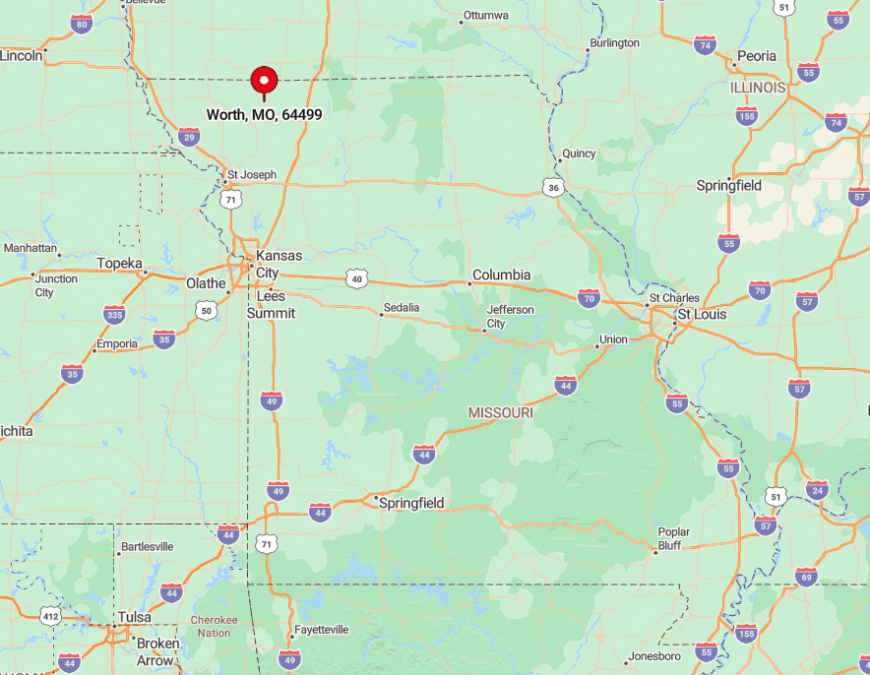
Worth is a tiny community tucked into Missouri’s far north, just south of the Iowa border. The only approach is via County Road B, a gravel ribbon that twists between soybean fields before climbing to the ridge.
Absence of a through-route deters casual motorists, so most vehicles belong to locals or anglers aiming for the Grand River access below town. Those who make the trip are rewarded with a sweeping overlook of unbroken timber rarely seen by outsiders.
7. Hurdland – Knox County’s Grove-Sheltered Hamlet

Around 140 residents settle beneath a protective ring of ancient oaks in Hurdland, where Main Street hosts a post-office-café hybrid serving homemade tenderloins every Friday.
Visitors wander to the restored 1903 bandstand for summer bluegrass nights or join locals at the annual Fourth of July celebration—complete with mule-team parade. Soybeans, corn, and a nearby grain elevator shape most paychecks; a quilting co-op in a converted church adds a touch of cottage industry.
The town’s grove and surrounding miles of open cropland create a natural acoustic barrier, leaving nights unspoiled by highway drone. Starlight here still reflects in puddles on the quiet brick sidewalk.
Where is Hurdland?
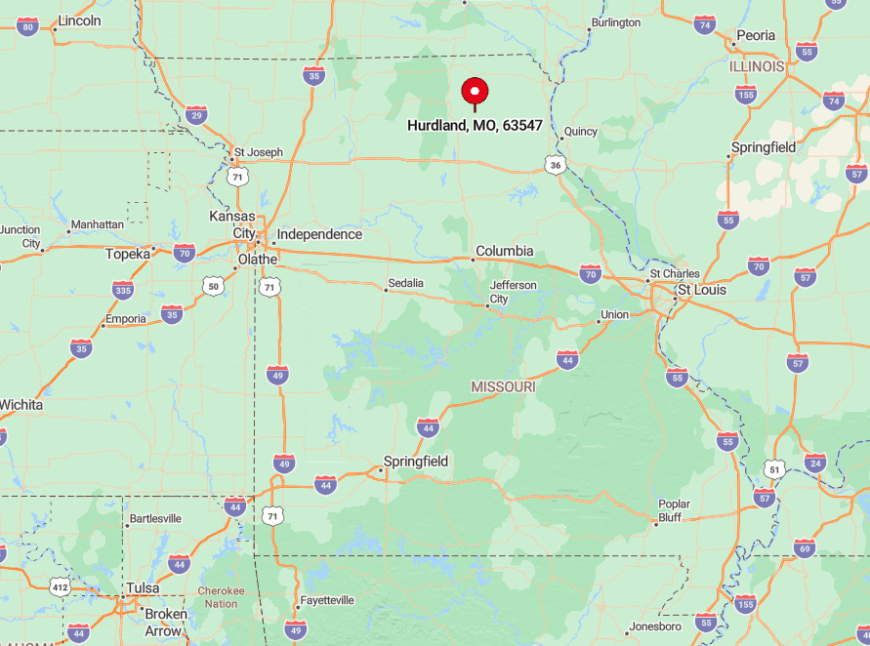
Hurdland rests in northeastern Missouri, twelve miles northeast of Edina along Missouri Route K. The route dead-ends three miles farther on, so no traffic passes through town en route to anywhere else.
Travelers leave four-lane U.S. 136 at Newark, then cover the final miles past silo-dotted horizons where radio reception fades. Around the last bend, oak canopies close overhead as if drawing curtains around the settlement.
6. Ethel – Macon County’s Almost-Forgotten Depot Town
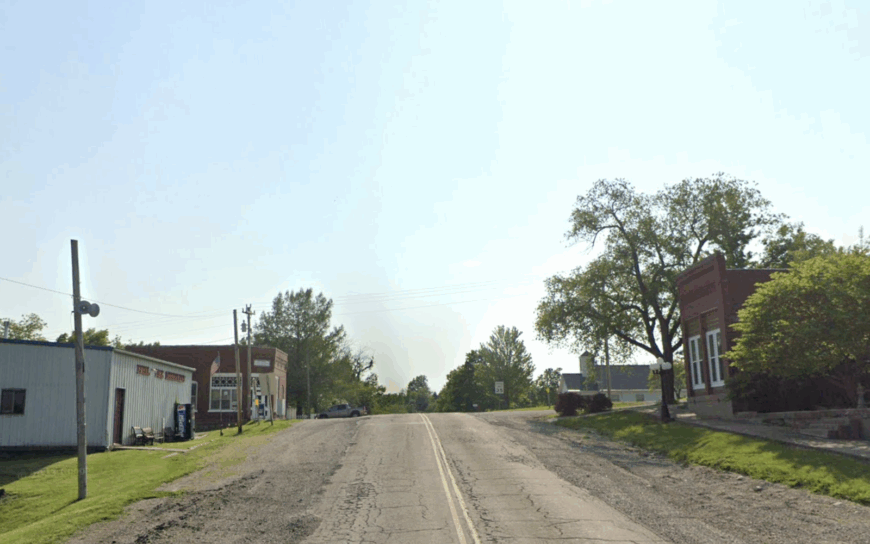
Ethel’s population hovers near 60, with clapboard homes sitting wide apart on grassy half-acre lots where children chase fireflies undisturbed by street traffic. The abandoned Wabash rail spur still slices through town, drawing photographers each autumn when goldenrod frames the rusted tracks.
Grain farming and a small welding shop constitute the primary employment, while retirees tend large vegetable plots for local markets. Seclusion endures thanks to 50 percent undeveloped prairie surrounding the grid and the total absence of active commercial storefronts.
Afternoons pass to the sound of bobwhite quail calling from waist-high bluestem.
Where is Ethel?
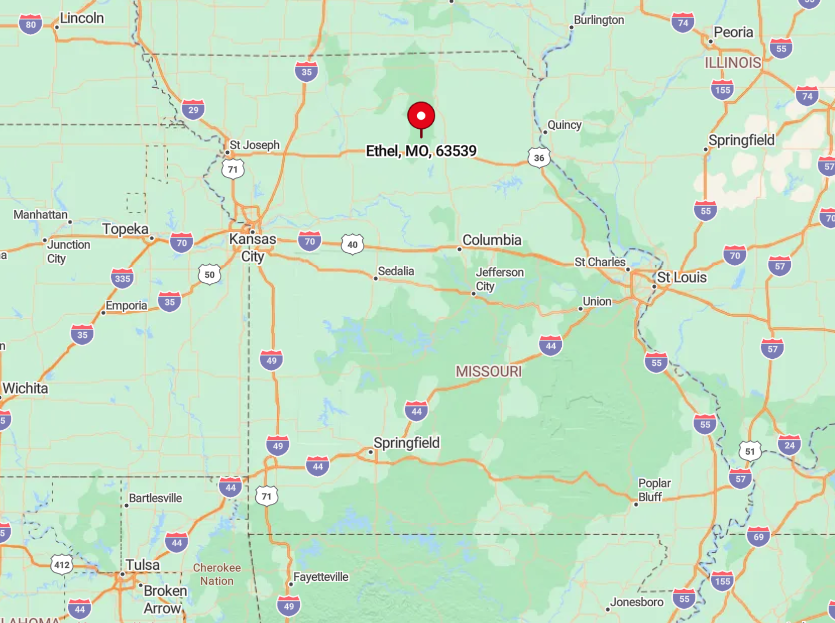
This hamlet occupies central Macon County, a modest eight blocks north of Route 36 yet visually hidden by rolling pasture. Only county gravel roads connect Ethel to neighboring Marceline and Macon, meaning GPS often identifies the destination as “Unnamed Road.”
Visitors exit the four-lane at Callao and drift six miles north, crossing a single wooden trestle before the first mailbox appears. The final stretch feels like moving deeper into prairie history with every tire crunch.
5. Rutledge – A Back-Road Haven for Homesteaders

About 90 residents share Rutledge, a mix of long-established Amish families and newer off-grid homesteaders drawn by low land prices and fertile loam. Saturday flea markets brim with handmade soaps, heirloom seeds, and cast-iron skillets, while nearby Fox Valley Lake Conservation Area offers canoeing under bald-eagle flyovers.
Small-scale organic farming, woodworking shops, and a cooperative solar array provide livelihoods without altering the landscape’s hush. Rugged ridges and gravel switchbacks surrounding town scatter traffic and keep the night sky inky, perfect for meteor-watching from back-porch rocking chairs.
Even the local community center runs on rainwater catchment and wood heat, underscoring the settlement’s self-reliant vibe.
Where is Rutledge?
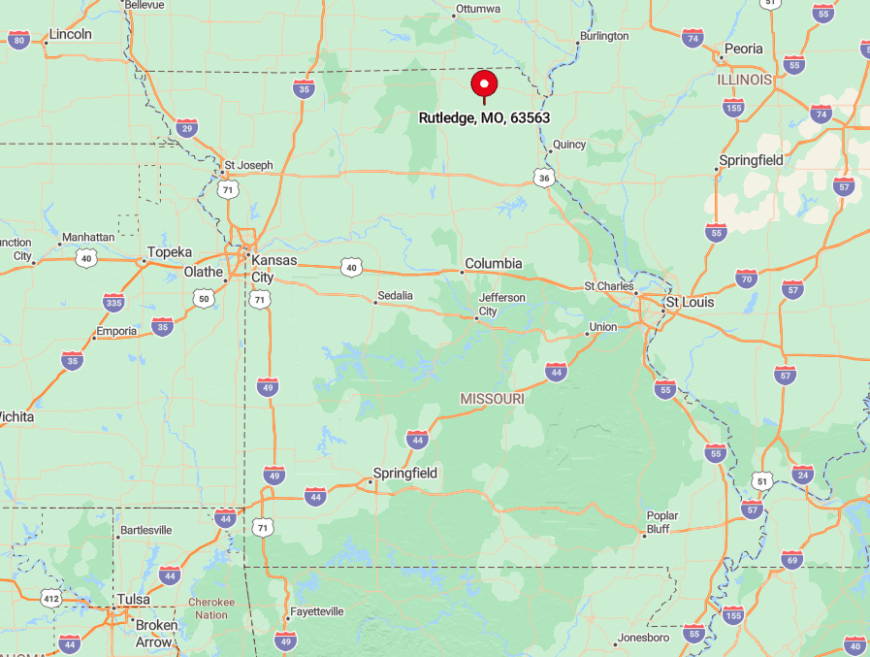
Located in far southeastern Scotland County, Rutledge lies eight miles east of Memphis via County Route A, then another three miles down gravel. Forested ridges hem in the village on three sides, making cell service spotty and preserving deep silence.
A small, unmanned airstrip two miles south serves the occasional visiting bush plane, but most arrivals bump along limestone roadbeds lined with sumac. The sense of arrival is marked by horse-drawn buggies hitched outside the trading post.
4. Parnell – Quiet Crossroads on the High Prairie
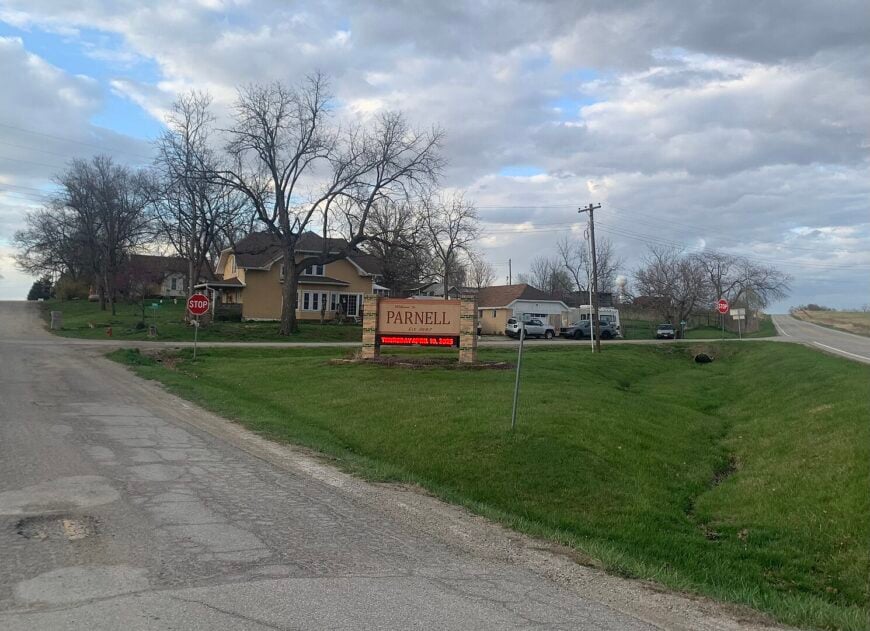
Parnell shelters about 190 people amid sweeping prairie vistas where wind rattles native grass and the white steeple of St. Joseph’s Catholic Church towers over grain bins. Locals gather for the July PRCA Saddle Bronc Rodeo, then cool off fishing farm ponds tucked among knoll-top pastures.
Crop farming, livestock operations, and school district jobs anchor the economy, but a small custom leather shop ships hand-tooled belts worldwide. Fifteen miles of open grassland separate Parnell from Maryville’s glow, leaving minimal light pollution and pitch-black midnight skies prized by amateur astronomers.
Summer evenings often end with lawn chairs set toward the Milky Way as coyotes yip in distant draws.
Where is Parnell?
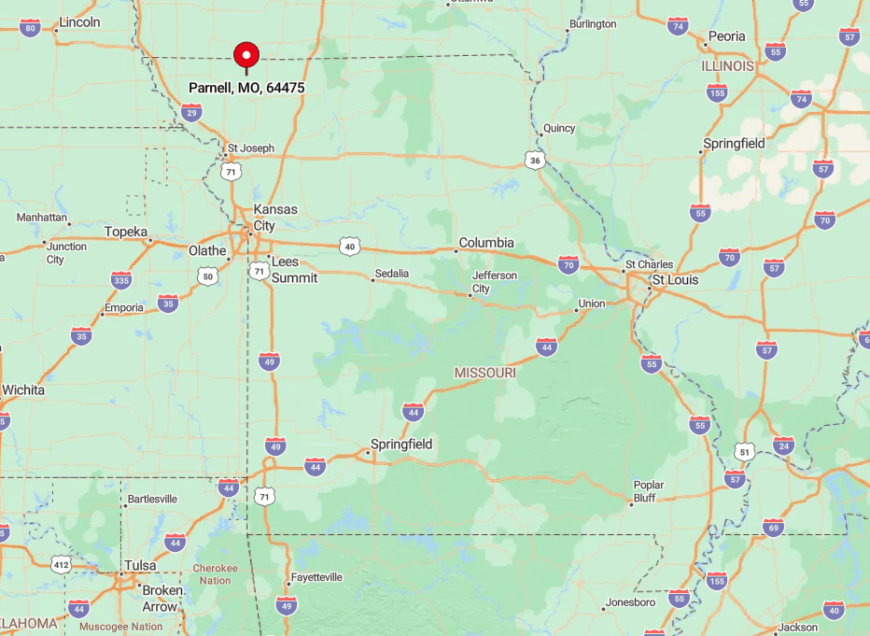
The town stands in north-central Nodaway County at the intersection of Highways NN and 46—two lightly traveled ribbons that dissolve into gravel a few miles beyond. A slight rise in elevation grants panoramic views and funnels prevailing winds that drown out distant engine noise.
Visitors usually exit U.S. 71 at Maryville and venture northwest through miles of corn bordered by windbreak cedars. The final approach reveals the church spire first, a prairie lighthouse guiding travelers into a slower rhythm.
3. Arbela – Scotland County’s Two-Street Time Capsule
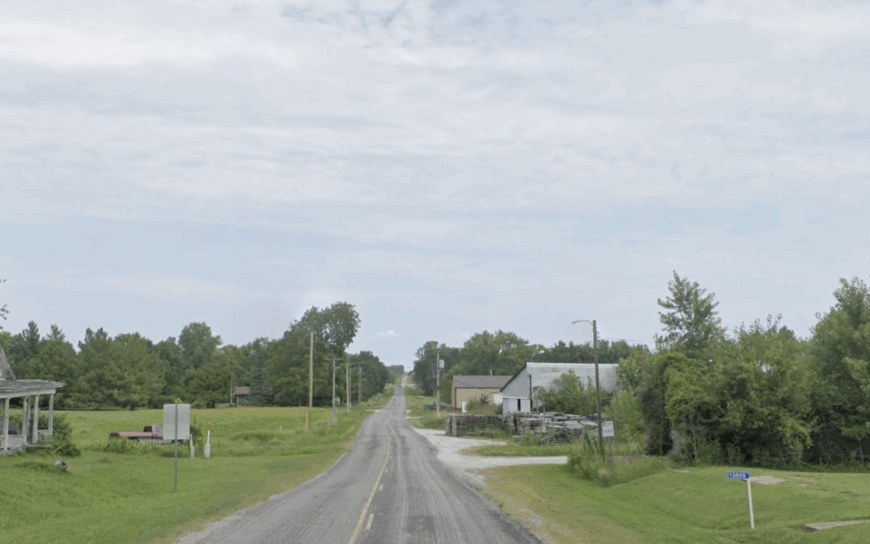
Arbela supports just over 40 inhabitants along two tree-tunneled streets where maples arch together like cathedral rafters. The abandoned depot stands as a photogenic relic, while surrounding hayfields invite leisurely wagon rides during fall harvest festivals.
Cattle ranching and seasonal hay contracts generate most income, complemented by a single family-run beekeeping operation that ships honey nationwide. Because no state route enters town and a five-mile buffer of cropland muffles sound, residents rarely see more than a dozen passing cars in a day.
Even the freight trains that once whistled through retired decades ago, leaving bird song to fill the gap.
Where is Arbela?
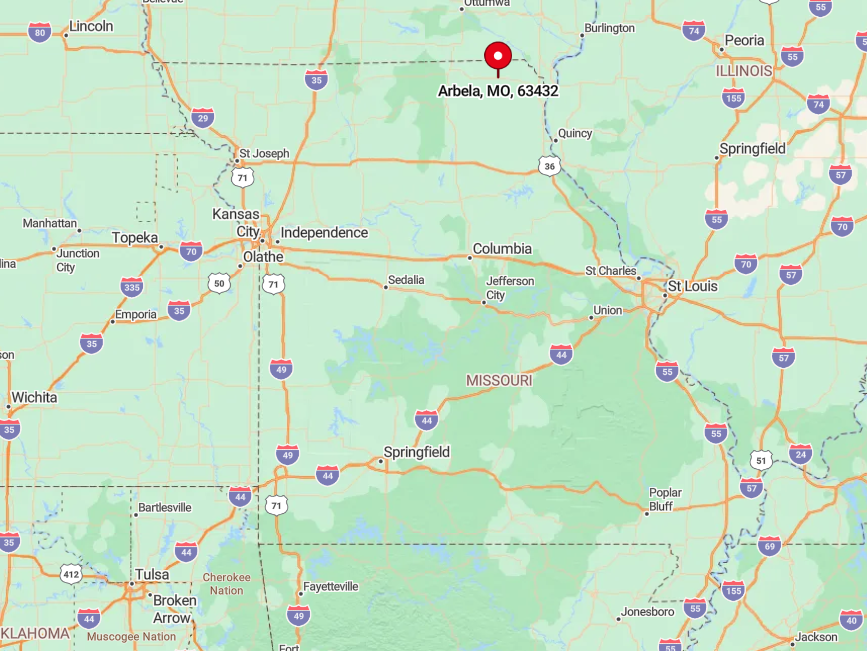
Arbela occupies southwestern Scotland County, four miles south of U.S. 136 and reachable only by County Road H. Sparse signage means first-time visitors often rely on the gothic-roofed depot as their landmark on the horizon.
Turning off the highway, drivers weave among hay bales and grazing Herefords before crossing into town limits marked by a single wooden placard. The absence of commercial lure on surrounding roads keeps accidental tourists wonderfully rare.
2. Livonia – Hidden Along the Iowa Line
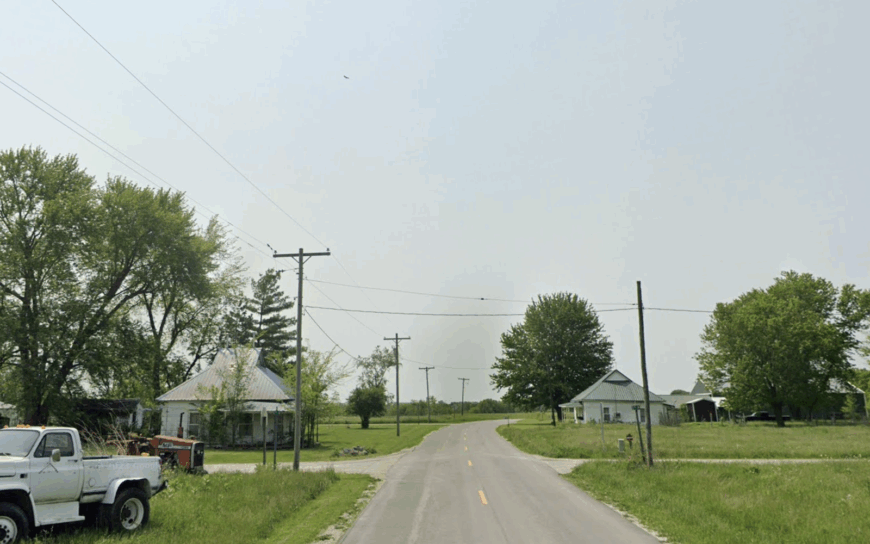
Livonia’s head count barely tops 70, yet a historic stone schoolhouse and tidy cluster of farmsteads lend it quiet dignity. Outdoor pursuits center on archery deer season and mushroom hunting in the timbered hills that ripple north toward Iowa.
Cattle grazing and row crops remain economic staples, while a part-time blacksmith shop keeps horse tack in working order for area ranches. Because Livonia lies twenty miles from the nearest stoplight and shares its fields with a thriving deer population, evenings often feature more hoofprints than tire tracks.
The hush is deep enough for distant whip-poor-wills to serve as the town’s unofficial clock.
Where is Livonia?
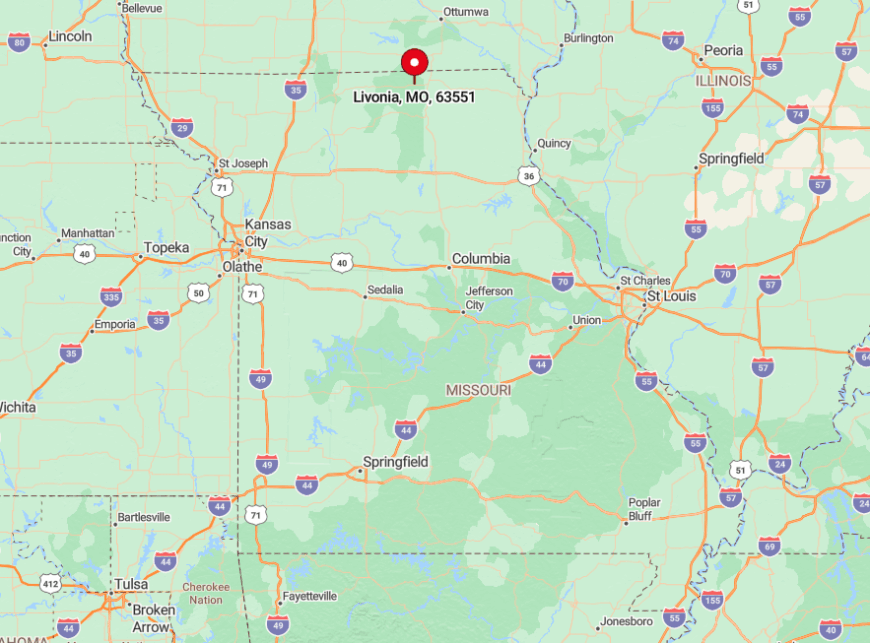
Situated in far northeast Putnam County, Livonia sits less than two miles south of the Iowa state line along Route B. Thick oak ridges and winding sections of Shoal Creek shield the community from the noise of U.S. 136 to the south.
Access involves quitting the highway at Unionville and driving a half hour through rolling pasture where cell reception fades to one bar. By the time the limestone schoolhouse appears, visitors understand why residents relish their buffer from modern stir.
1. Amity – A Pocket of Pastoral Quiet in DeKalb County
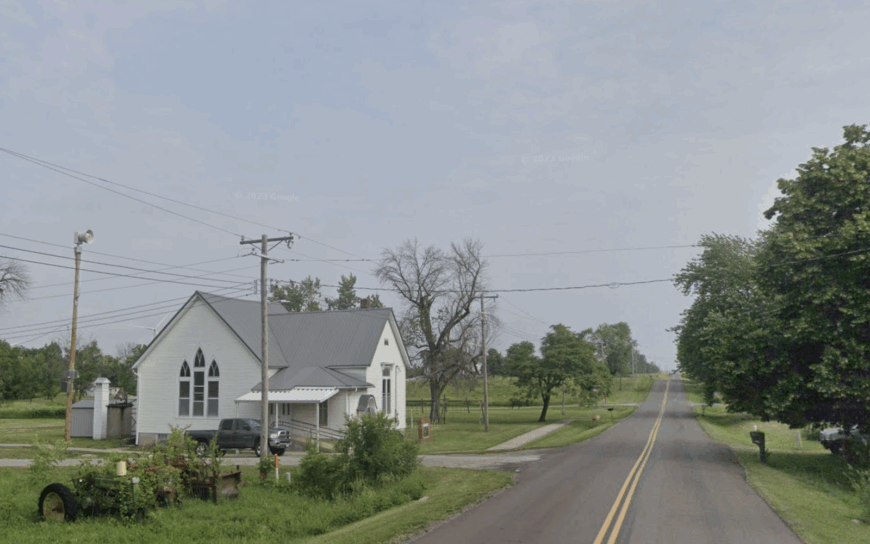
Amity hosts fewer than 50 folks, their century-old homes set on generous one-acre lots bordered by windbreak sycamores and corn as far as the eye can see. Community life revolves around potluck suppers in the old church basement and spring picnics near a vintage iron truss bridge spanning Little Third Fork Creek.
Row-crop agriculture and remote online work sustain households; otherwise, commerce is absent, leaving mornings free of delivery trucks and storefront chatter. Seclusion thrives thanks to gravel roads on all sides, a complete lack of businesses, and distances of ten or more miles to any convenience store.
Where is Amity?

Nestled in southern DeKalb County, Amity rests seven miles west of U.S. 169 and roughly an hour north of Kansas City. Surrounding cornfields form a living maze that hides the settlement from through-traffic, and tree lines protect against prairie winds.
Travelers exit the highway at Gower, wind along County Road W, then rattle across three low-water crossings before spotting the white steeple that signals arrival. That small effort ensures life inside Amity proceeds at a pastoral pace rarely disturbed by the outside world.






